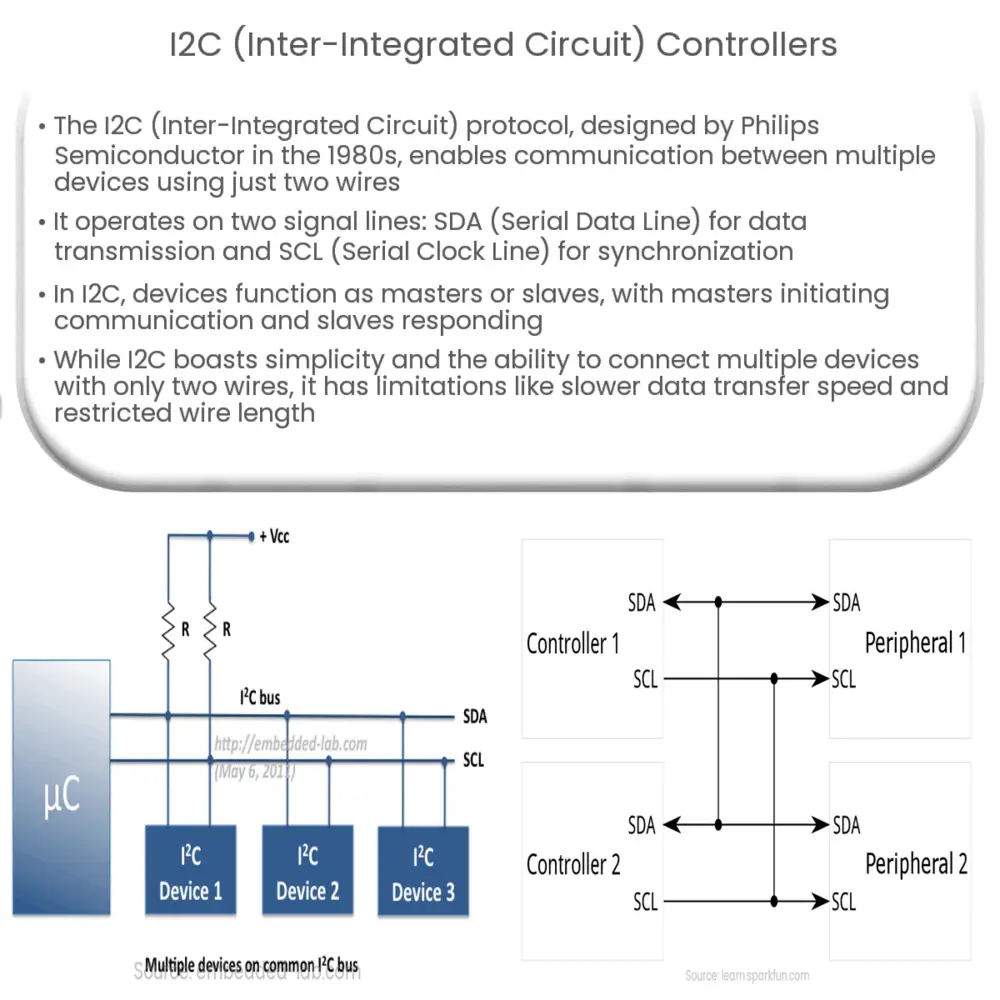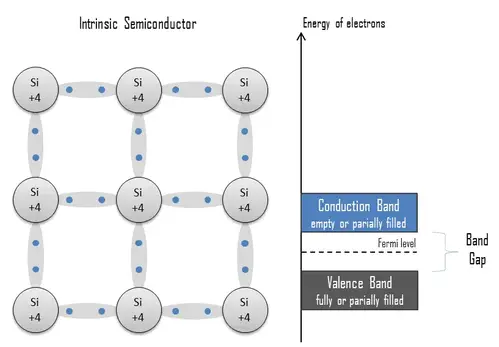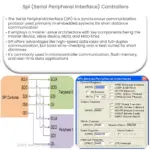Explore the workings of I2C (Inter-Integrated Circuit) Controllers, their role in device communication, and their advantages & limitations.

Understanding I2C (Inter-Integrated Circuit) Controllers
The I2C (Inter-Integrated Circuit) is a type of communication protocol that allows multiple slave devices to be controlled by one or more master devices over just two wires. Designed by Philips Semiconductor (now NXP Semiconductors) in the 1980s, this system is widely used due to its simplicity and efficiency, providing a flexible way for data exchange between devices.
How does I2C work?
The functionality of I2C is built upon two signal lines, SDA (Serial Data Line) and SCL (Serial Clock Line). This bi-directional bus communication involves the interaction of these two lines where SDA carries the data while SCL is responsible for synchronization.
- SDA (Serial Data Line): This line is responsible for the transmission of data between I2C devices. All the devices on the I2C bus use the SDA line to send and receive data.
- SCL (Serial Clock Line): The master device generates a clock signal on this line to ensure all the devices on the I2C bus are synchronized during data transmission.
Master and Slave Devices
In the I2C communication protocol, devices are classified into two categories: master and slave. The master device is the one that initiates the communication and provides the clock signal. In contrast, slave devices are those that respond to the master device and perform operations as directed by it.
- Master Device: This device generates the clock signal, initiates communication with the slaves, and may also send data to or receive data from the slave devices.
- Slave Device: These devices listen to the bus and respond when addressed by the master device. They perform the operations as per the instructions given by the master.
Data Transfer in I2C
Data transmission in I2C is a bit-wise transfer and occurs sequentially with the most significant bit (MSB) transferred first. During a data transfer, the master device generates a START condition followed by a STOP condition, signifying the beginning and the end of the data transfer.
I2C Data Transfer Protocol
In an I2C data transfer, the communication begins with a START condition, followed by a 7-bit slave address, and finally a data direction bit (read or write) which is all initiated by the master device. If a slave device recognizes the address, it will send an acknowledgement signal (ACK) back to the master, signaling its readiness to receive or transmit data.
- START condition: A high-to-low transition on the SDA line while the SCL line remains high marks the beginning of a transmission.
- Address Frame: After the START condition, the master sends a 7-bit address that identifies the slave it wants to communicate with. This is followed by a bit that indicates whether the master intends to write to the slave (0) or read from it (1).
- ACK bit: After the address and direction are sent, the master releases the SDA line. The slave device then pulls the SDA line low to acknowledge that it successfully received the address and is ready for the data transaction.
Advantages and Limitations of I2C
I2C has several notable advantages, including its simplicity, flexibility, and the fact that it only requires two wires, which makes it ideal for interconnecting multiple devices. However, it does have some limitations. The speed of data transmission in I2C is lower compared to other interfaces like SPI, and the total wire length is limited due to its dependence on capacitive load.
- Advantages:
- Only two bus lines are required.
- Multiple masters and slaves can be used.
- It has built-in error checking functionality.
- Limitations:
- Data transfer speed is comparatively low.
- Total wire length is limited.
- It requires more complex software compared to other interfaces.
Conclusion
In conclusion, the I2C (Inter-Integrated Circuit) protocol offers a reliable and efficient way of inter-device communication. Its ease of use and flexibility have made it a popular choice for designers in a wide variety of applications. However, understanding its strengths and limitations is crucial in order to make effective use of the I2C protocol in device communication. Despite its few drawbacks, its benefits, especially the need for only two wires and the ability to connect multiple devices, make it a potent choice in many use-cases.



